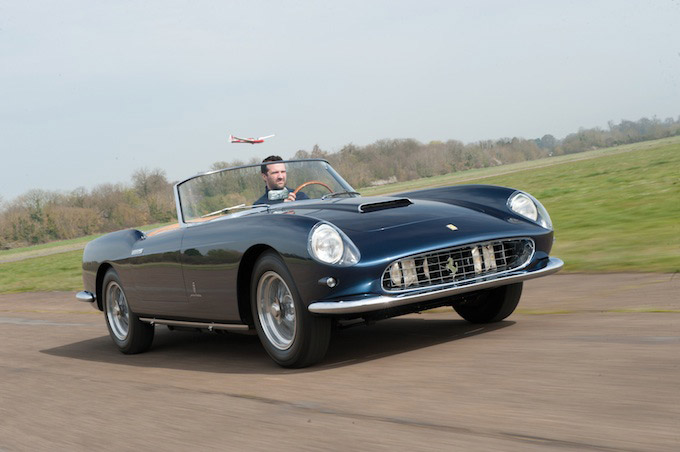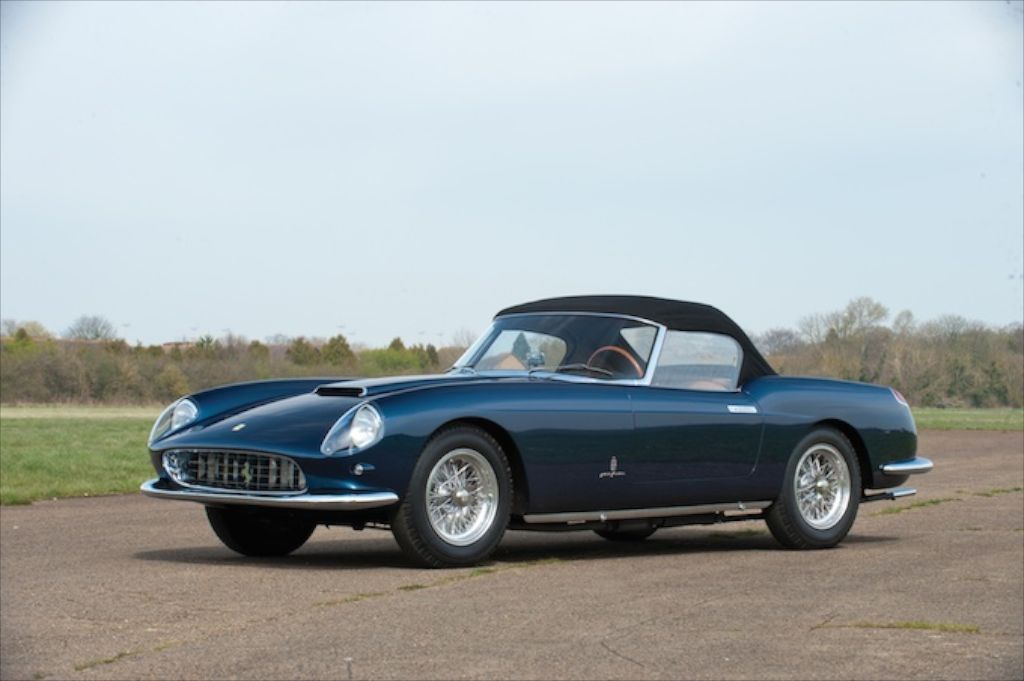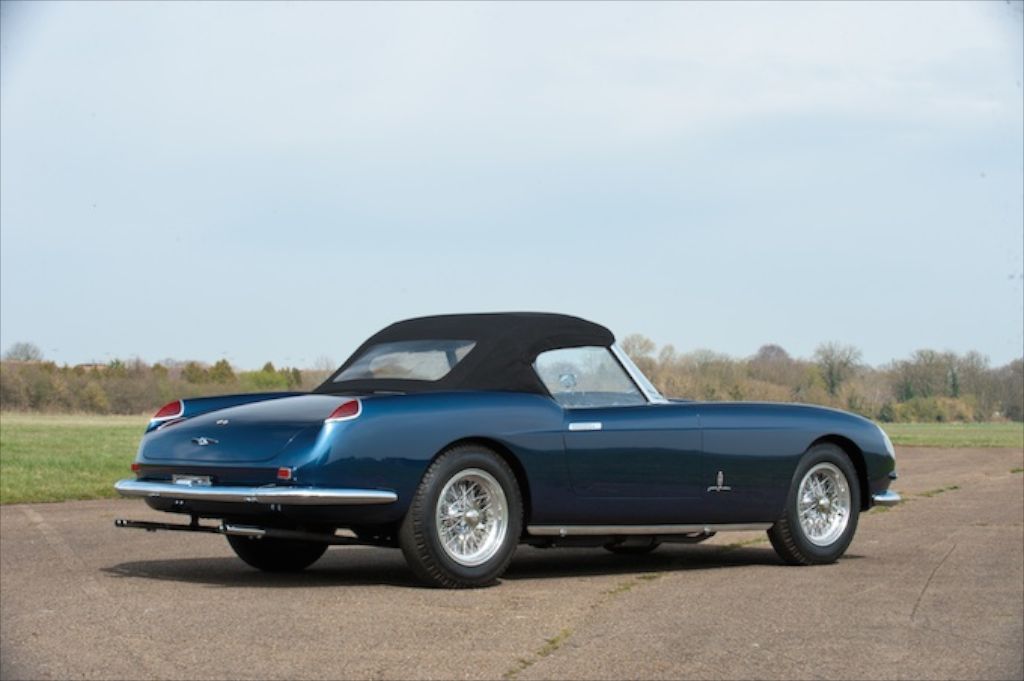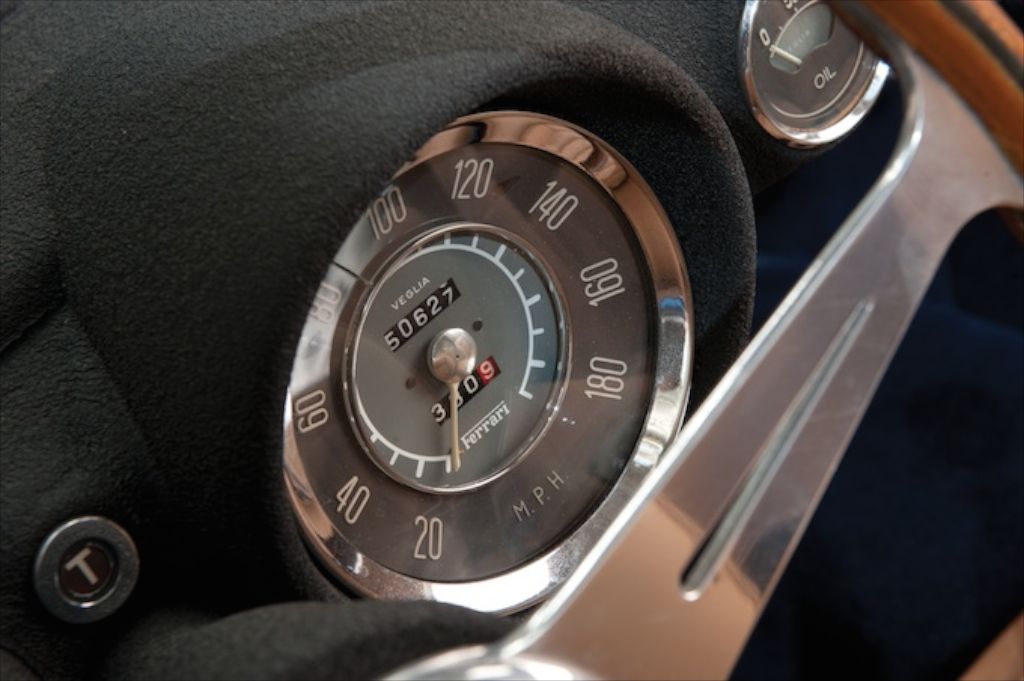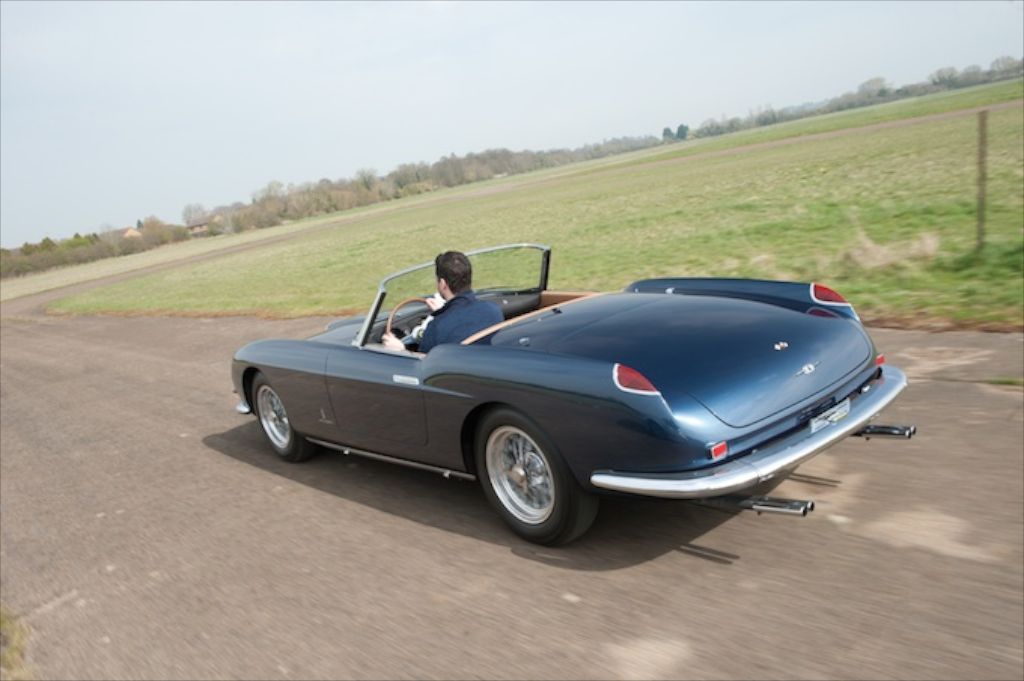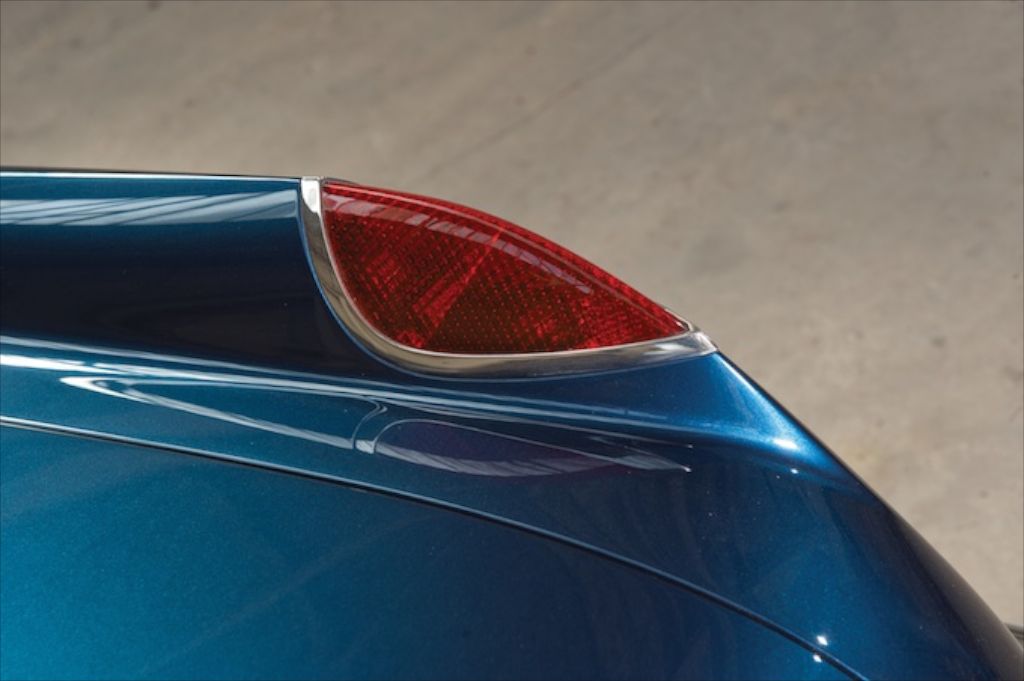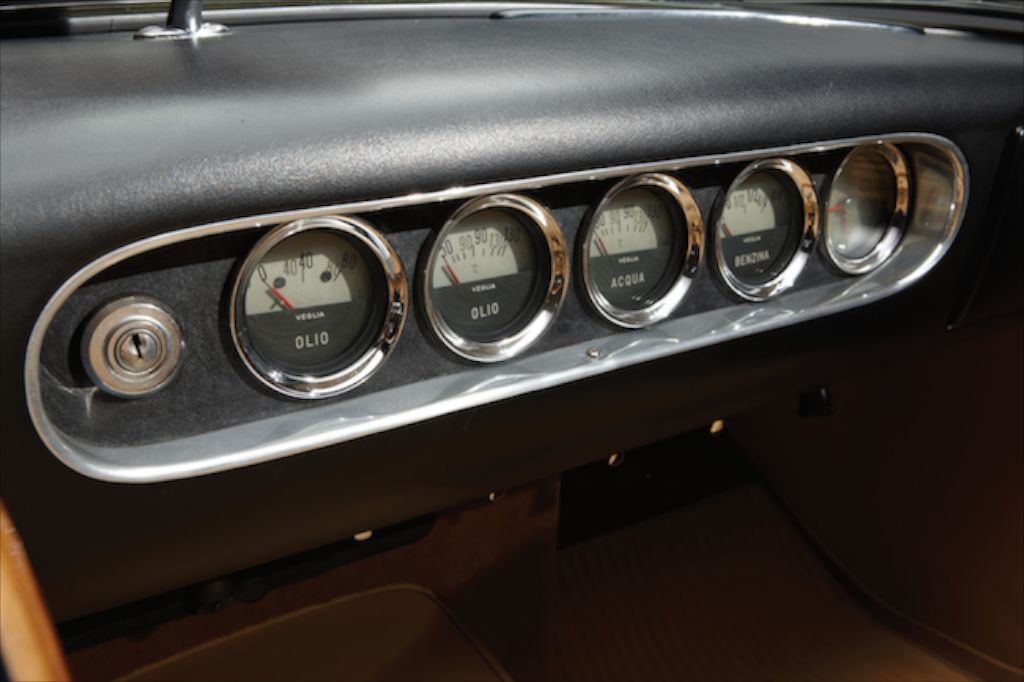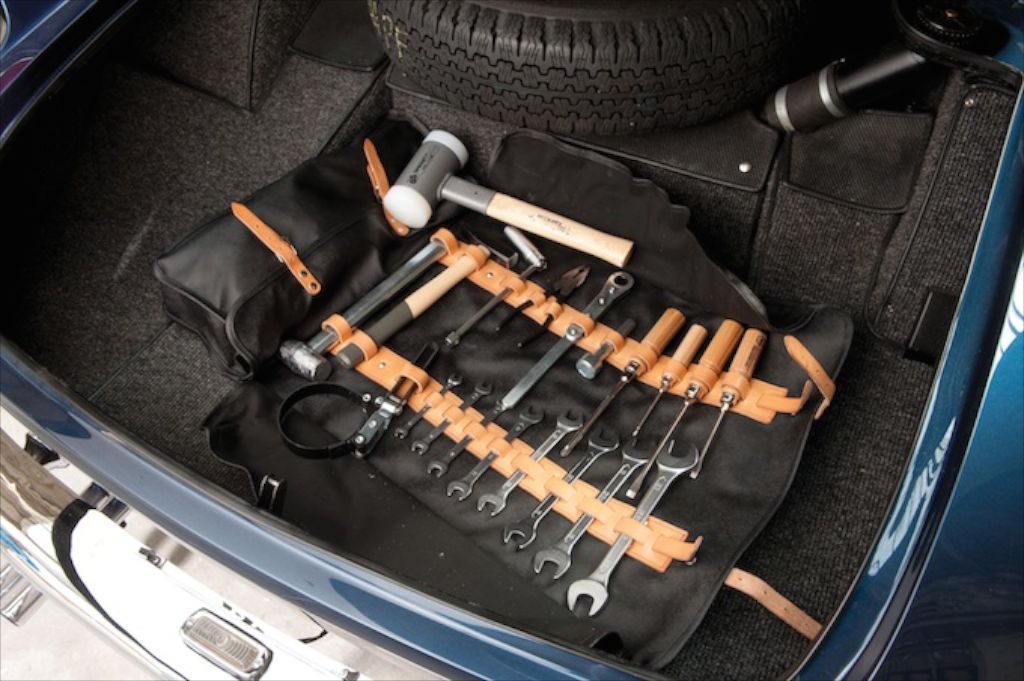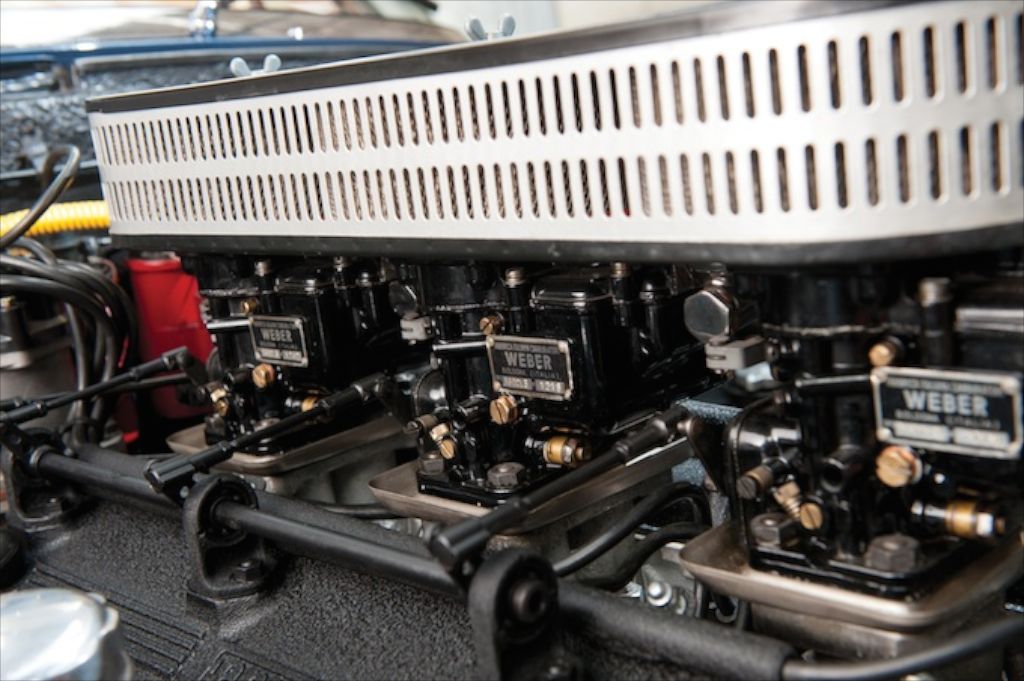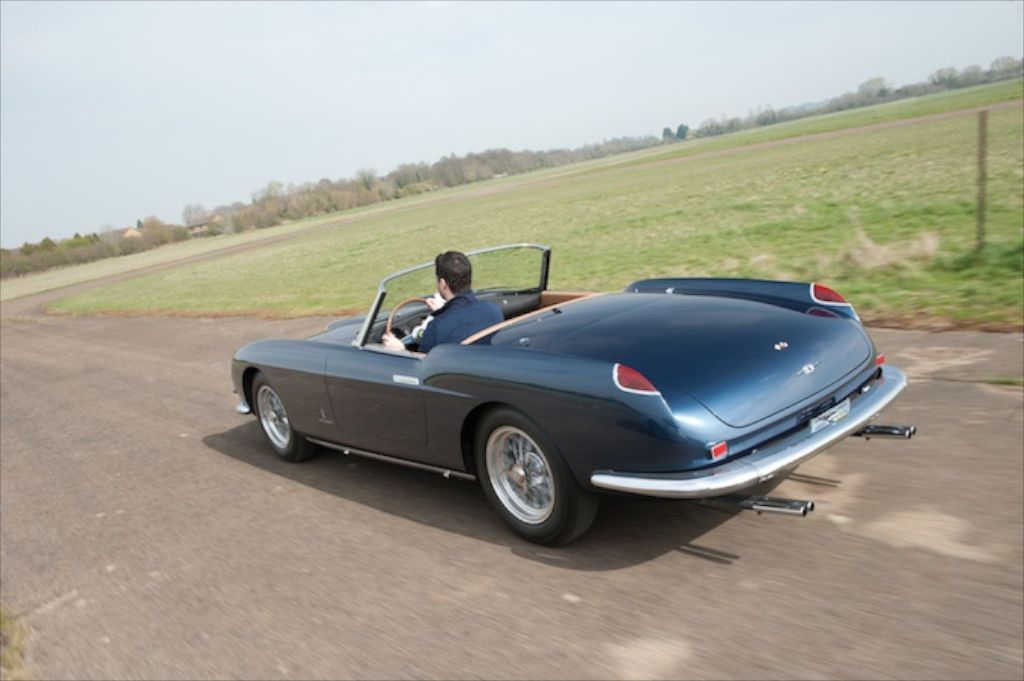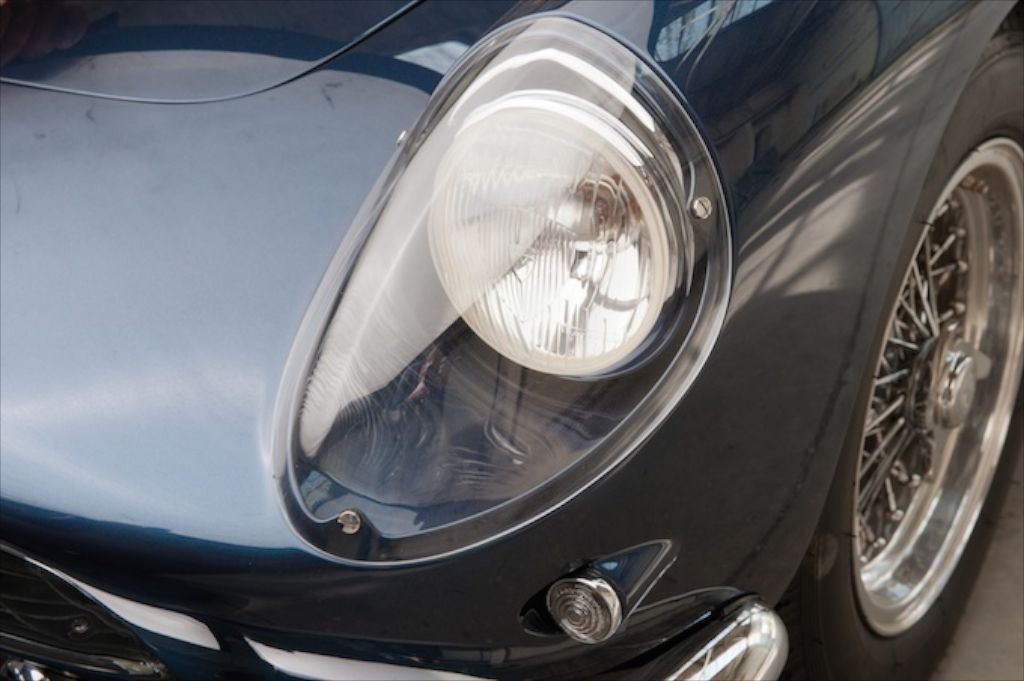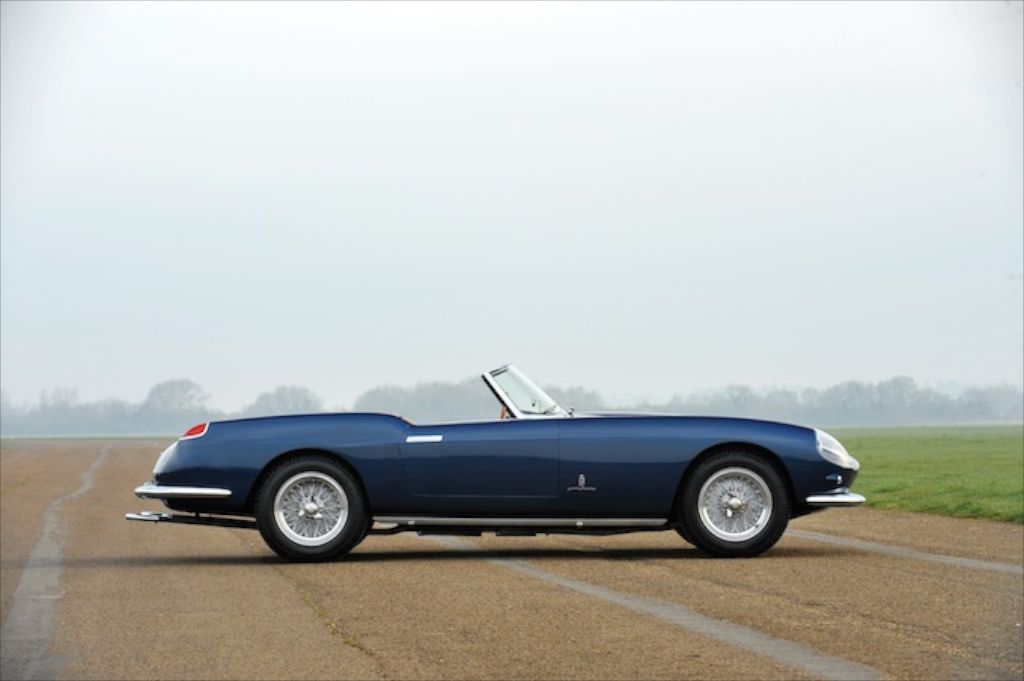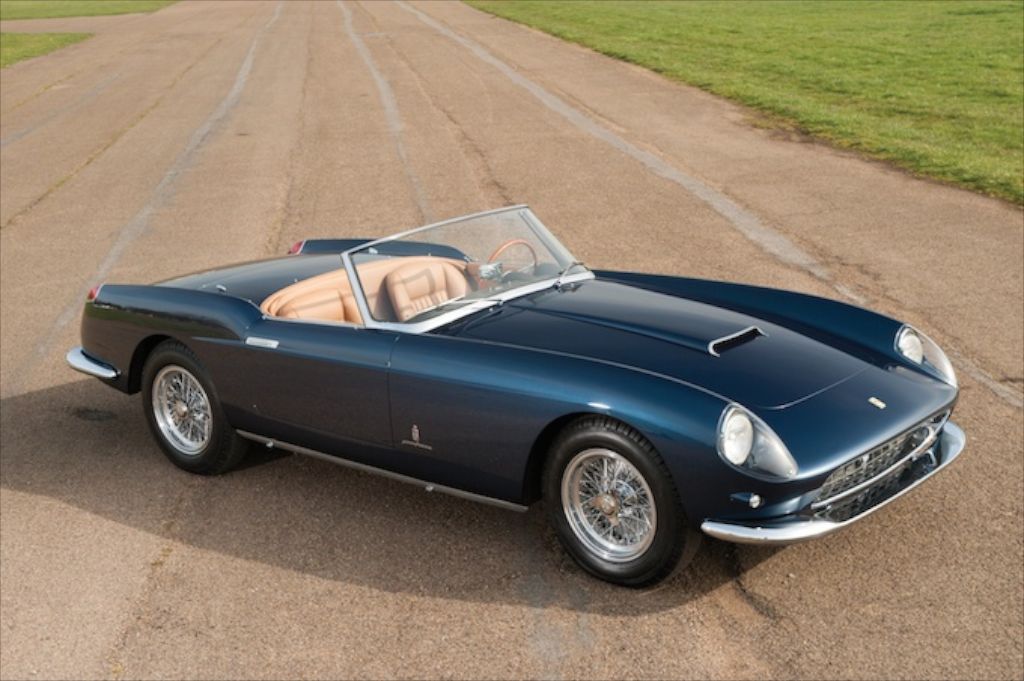Published in Monterey Car Week (Ferrari 250 GT Cabriolet)
Editor’s Note: There’s everything to like with the 1959 Ferrari 250 GT Cabriolet. Our thanks and appreciation go out to RM Auctions for letting Monterey Car Week publish their fine article and photos. By the way, the car crossed the block at the RM Auctions Monaco 2014 Sale and garnered $4,704,000 Euros.
Photo Credit: Tom Wood ©2014 Courtesy of RM Auctions
Ferrari 250 GT Cabriolet
240 bhp, 2,953 cc SOHC V-12 engine with triple Weber 36 DCL/3 carburettors, four-speed manual transmission, independent front suspension with unequal length A-arms and coil springs, live rear axle with semi-elliptic leaf springs and parallel trailing arms, and four-wheel hydraulic drum brakes. Wheelbase: 2,600 mm
- The 1959 New York International Auto Show car
- The 36th of 40 built; the final factory covered-headlamp car
- Built on the superior 508D chassis
- Formerly owned by Bob Grossman, William McKelvy, and Glenn Mounger
- Ferrari Classiche certified as a matching-numbers example
- Former Cavallino cover car
The Pinin Farina-bodied cabriolet that Ferrari introduced at the Geneva Motor Show in March 1957 was not only a triumph in design, with its elegant rear haunches, covered headlamps, and long centrally ventilated bonnet, but it was also the car that marked an auspicious milestone in Maranello history as the company’s first series-produced open-top model. Whilst the first four examples were essentially prototypes that visibly varied, sometimes referred to as the Pinin Farina Spiders, the next thirty-six cars were far more uniform in design. However, despite being the first series-built Ferrari convertible, many experts still consider the Series I Cabriolets to be virtual one-offs, as they were constructed in Pinin Farina’s custom shop rather than on the coachbuilder’s factory floor. Each varied significantly enough from example to example to support such a contention.
In total, only 40 examples of the Series I Pinin Farina Cabriolet were built before the model gave way to a mid-1959 redesign that was intended to further differentiate the Cabriolet from the California Spider. Shortly before the brief run of first-series Cabriolets came to end, the cars benefited from the introduction of a stronger and much stiffer chassis that simultaneously came into use with the rare competition 250 TdFs. These new chassis were also utilised on the 250 GT LWB California Spiders. Ever a work in development, Ferrari’s V-12 road car chassis was now dubbed the Tipo 508D, succeeding the 508B and 508C.
This Ferrari 250 GT Cabriolet, chassis 1181 GT, was the 36th of 40 Series I PF Cabriolets built, and it is the very last to feature covered headlamps. It was built with the stronger 508D chassis and equipped with the latest version of Gioacchino Columbo’s short-block engine design, the 128D (prized for its twin rear-mounted Marelli distributors), which gave this car the same exquisite handling as the later 250 California Spiders. This car entered Pinin Farina’s custom shop for body work on 28 November 1958, and it was completed on 12 March 1959. Whilst at the hands of Pinin Farina’s renowned craftsmen, the Cabriolet was finished in traditional Rosso Corsa and appointed with a less than traditional white Connolly leather interior, resulting in a striking colour combination.
Two days later, the car was shipped to New York City for display on Ferrari’s stand at the third International Automobile Show at New York’s Coliseum, where it shared the platform with a California Spider and a 250 Testa Rossa, as indelibly depicted in the 1959 Ferrari Yearbook. Following the auto show, 1181 GT was delivered to Luigi Chinetti Jr., and a copy of the original factory order sheet confirms his guarantee of delivery on 11 September 1959.
The Cabriolet was then sold in 1960 to preferred Ferrari customer William McKelvy, the famed principal of the Scuderia Bear team (and also the buyer of the first 250 GTO, chassis number 3223). It was returned to Chinetti Motors a year later and then sold to Bob Grossman, the well-known New York-based dealer, Briggs Cunningham team driver, and two-time SCCA champion who helped propel the California Spider to stardom. In 1965, the Cabriolet was purchased from Grossman by Baltimore, Maryland, resident John Freund, who traded in a 1957 Jaguar XK140 MC as part of his payment.
Mr Freund, who would soon join the FCA (as demonstrated by an original 1969 application), retained possession of the car for over 20 years and personally conducted much of the car’s servicing and maintenance. Following his passing, around 1980, the Ferrari was sold by his widow to a Mr White, who in turn sold the car to Norman Wolgin. At the time, the Cabriolet was reportedly still finished in its original factory-equipped paint and cosmetic trim, and it displayed just 34,000 original miles.
Chassis 1181 GT was subsequently offered by dealer Marc Tauber and purchased in October 1987 by respected marque enthusiast William Kontes. During his period of ownership, the car was extensively restored and refinished in a deep coat of black paint, with an interior of red leather and black carpets. In this distinctive livery, the beautiful Ferrari was featured on the cover of the December 1991/January 1992 issue of Cavallino magazine, as the subject of a story about the Series I Cabriolet model, which was written by noted automotive writer Ken Gross.
In late 1997, the well-maintained 250 GT was acquired by a respected enthusiast and past chairman of the Pebble Beach Concours d’Elegance, Glenn Mounger, of Bainbridge Island, Washington. Mr Mounger campaigned the Cabriolet numerous times on the prestigious Colorado Grand, during which his co-pilots included his wife and daughters, as well as noted collectors Knox Kershaw and Ken Waltrip. Having driven his PF Cabriolet Series I on the tour for nearly every year he owned it, Mounger was proudly named the Prime Motoring Fool in 2008, which was a sure sign that he truly enjoyed every minute behind the wheel. When recently asked about his experience with 1181 GT, Mr Mounger happily expressed that the Ferrari was “by far my favourite car I’ve ever owned. It really was a fantastic car …nimble, responsive, a real pleasure to drive”.
In 2010, the Series I Cabriolet was acquired by Mr Steve Adler, who continued to show off the car at several concours, as well as take his turn behind the wheel on the Colorado Grand in 2010. This exquisite Ferrari was then acquired by the consignor, a discerning collector based in Great Britain who, seeking to shore up the 250 GT’s documentation, applied for Ferrari Classiche certification. The desirable Red Book was issued on 11 September 2013, sixty-four years to the day after the car’s original guaranteed date of delivery. The Certification of Authenticity importantly confirms that 1181 GT retains its original Colombo V-12 motor, gearbox, suspension, and bodywork.
Chassis 1181 GT was recently repainted in an elegant shade of dark blue and benefits from a re-trimmed interior. It is a rare and arresting early example of the harmonious design and race-bred engineering that informed the collaboration between Ferrari and Pinin Farina. The car is particularly notable as it was the last Series I Cabriolet to feature the esteemed covered headlamps and it was an official New York Auto Show car that was owned by two luminaries in sports car racing, William McKelvy and Bob Grossman.
This 250 GT has been certified by Ferrari Classiche to be a matching-numbers and factory-correct example, and it would make a strong contender at international concours d’elegance like Pebble Beach or Villa d’Este, as well as an ideal complement to any gathering of early Ferrari road cars. This outstanding paragon of Ferrari’s convertible development currently displays approximately 50,583 miles, which are believed to be original, inviting future ownership to enjoy the benefits of the updated 508D chassis and 128D engine.
Without equivocation, 1181 GT is a highly desirable exemplar of Ferrari’s early open-top grand touring production and is worthy of the finest world-class collections.




